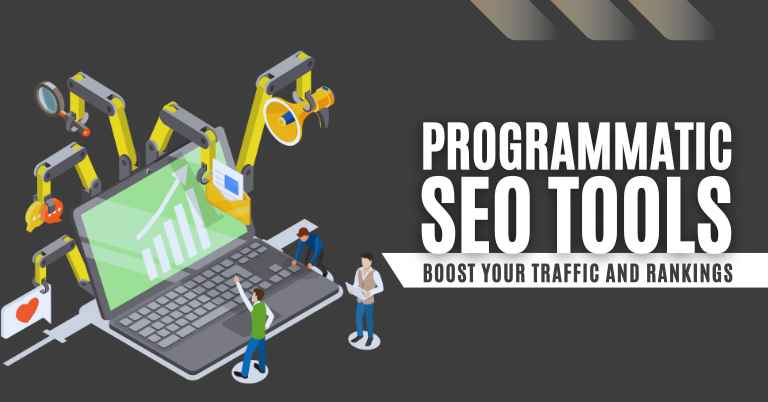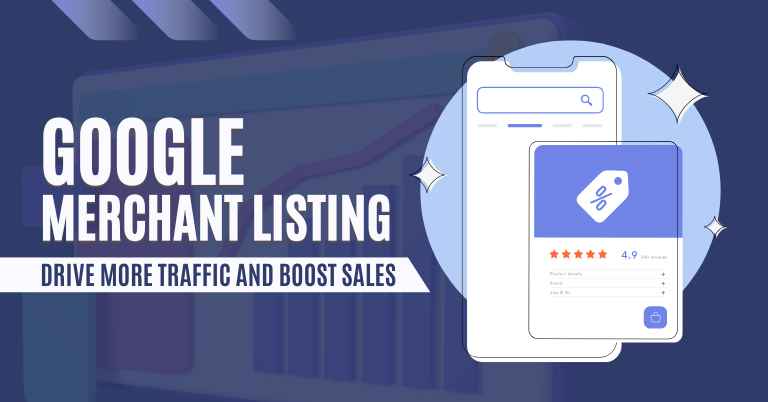Creating an effective SEO Strategy for SaaS Brands looking to succeed in the enterprise market. This guide will provide you with the necessary steps to optimize your website and improve your visibility in search engine results pages (SERPs), ultimately driving more organic traffic and generating leads for your business.
By following these strategies, you can position your SaaS brand as a leader in the industry and attract high-quality customers.
Let's See the Topic Overview
Understanding The Importance Of SEO for SaaS Brands
When it comes to growing your SaaS brand, effective SEO is an essential strategy that can make a significant impact. SEO, or search engine optimization, allows SaaS companies to optimize their online presence and increase their visibility in search engine results. In this guide, we will delve into the importance of SEO for SaaS brands and explore how it can drive organic traffic, enhance brand visibility, and play a crucial role in lead generation and customer acquisition.
The Impact Of Effective SEO On SaaS Brand Growth
Effective SEO can have a profound impact on the growth of your SaaS brand. By implementing a well-crafted SEO strategy, you can improve your website’s ranking on search engine result pages (SERPs), attract more qualified organic traffic, and gain a competitive edge over other SaaS brands in the market.
Furthermore, a high-ranking position on SERPs establishes your brand as a credible and authoritative source in your industry. This increased visibility not only helps attract potential customers but also builds trust and loyalty among your target audience.
Why SEO Is Crucial For SaaS Companies
SEO is crucial for SaaS companies for several reasons. Firstly, the digital landscape for SaaS brands is highly competitive, and effective SEO helps you stand out from the competition. By optimizing your website with relevant keywords and providing valuable content, you can improve your chances of ranking higher on SERPs and attracting more potential customers.
Secondly, SEO plays a vital role in improving the user experience on your website. Search engines reward websites that provide seamless navigation, fast loading times, and high-quality content. By optimizing your site’s structure, implementing user-friendly design, and creating informative and engaging content, you can enhance the user experience and keep visitors coming back for more.
How SEO Can Drive Organic Traffic And Increase Visibility
One of the most significant benefits of SEO for SaaS brands is its ability to drive organic traffic and increase visibility. With a well-optimized website, you can appear on the first page of search results for relevant keywords, attracting potential customers who are actively searching for the solutions your SaaS product offers.
By conducting thorough keyword research, optimizing your website’s pages, creating compelling meta tags, and building high-quality backlinks, you can increase your brand’s visibility in organic search results. This increased visibility translates into higher website traffic and a greater opportunity to convert visitors into paying customers.
The Role Of SEO In Lead Generation And Customer Acquisition
SEO plays a crucial role in lead generation and customer acquisition for SaaS brands. By targeting relevant keywords and optimizing your website’s content, you can attract potential customers at various stages of their buyer’s journey.
When your website appears in search results for specific queries, it not only drives organic traffic but also increases the chances of capturing valuable leads. With well-placed calls-to-action, landing pages, and contact forms, you can convert website visitors into leads and nurture them through the sales funnel.
Furthermore, an effective SEO strategy can also contribute to customer acquisition by improving your brand’s online reputation. Positive customer reviews, high-quality content, and authoritative backlinks all enhance your brand’s credibility and make it more likely for potential customers to choose your SaaS solution over competitors.
Researching And Analyzing Keywords For SaaS SEO
Effective keyword research is an essential component of any successful SEO strategy for SaaS brands. By understanding the significance of keyword research and utilizing the right tools and analytics, SaaS brands can identify relevant keywords that drive targeted traffic to their websites. This section will explore the importance of keyword research for SaaS brands, the utilization of keyword tools and analytics, and the prioritization of long-tail versus short-tail keywords. Additionally, we will discuss the incorporation of user intent and search trends in keyword selection.
The Significance Of Keyword Research For SaaS Brands
Keyword research lays the foundation for a robust SEO strategy for SaaS brands. Effectively identifying high-performing keywords ensures that your website ranks well in search engine results pages (SERPs) and attracts the right audience. By conducting thorough keyword research, you can uncover valuable insights into your target audience’s search behavior, enabling you to optimize your content and drive relevant traffic to your SaaS platform.
Utilizing Keyword Tools And Analytics To Identify Relevant Keywords
Keyword tools and analytics play a pivotal role in identifying relevant keywords for your SaaS brand. These tools provide valuable data on search volume, competition, and related keywords. By leveraging these insights, you can discover keywords that align with your target audience’s search intent and optimize your website accordingly. Popular keyword research tools such as Google Keyword Planner, SEMrush, and Moz’s Keyword Explorer offer powerful capabilities to uncover valuable keyword opportunities.
Long-tail Vs. Short-tail Keywords: Which To Prioritize?
When it comes to keyword selection, SaaS brands must consider the balance between long-tail and short-tail keywords. Long-tail keywords are longer and more specific phrases that reflect the user’s search intent. While they may have lower search volume, they often yield higher conversion rates due to their specificity. On the other hand, short-tail keywords are broader and more generic terms that have high search volume but can also be highly competitive. While both types have their merits, prioritizing long-tail keywords tailored to your SaaS product can lead to more targeted traffic and higher conversions.
Incorporating User Intent And Search Trends In Keyword Selection
Understanding user intent and staying aware of search trends is crucial in selecting the most valuable keywords for SaaS SEO. User intent refers to the reason behind a user’s search and understanding it allows you to create content that satisfies their specific needs. By analyzing search trends and exploring popular topics and industry-specific keywords, you can stay ahead of the competition and capitalize on the most relevant and up-to-date keywords. Incorporating user intent and search trends into your keyword selection process ensures that your SaaS brand remains visible and competitive in the ever-evolving digital landscape.
Optimizing On-page SEO for SaaS Websites
When it comes to improving the visibility and rankings of your SaaS website, optimizing the on-page SEO is crucial. This involves various elements such as meta titles, descriptions, URLs, content quality, header tags, image optimization, alt tags, and internal linking structure. In this guide to enterprise SEO strategy for SaaS brands, we will delve into these elements and provide you with actionable tips to optimize your on-page SEO efficiently.
Writing Compelling Meta Titles And Descriptions
Meta titles and descriptions play a significant role in attracting organic traffic to your SaaS website. These elements should be concise, descriptive, and compelling to entice users into clicking on your SERP listing. When crafting meta titles and descriptions, keep in mind the following:
- Include relevant keywords at the beginning of the title to enhance visibility.
- Limit the title length to around 60 characters to avoid truncation on search engines.
- Write unique meta descriptions for each page, highlighting its value proposition.
- Ensure the meta description length is around 160 characters, providing a persuasive snippet that encourages users to click through.
Creating SEO-friendly URLs and Permalinks
Creating SEO-friendly URLs and permalinks improves the overall SEO of your SaaS website. To optimize this aspect, follow these best practices:
- Use hyphens to separate words in the URL, making it easier to read and understand for both search engines and users.
- Avoid using numbers or irrelevant characters in the URL to keep it clean and concise.
- Include relevant keywords in the URL to enhance its relevance and visibility.
- Keep the URL structure consistent and organized, ensuring it reflects the information hierarchy of your website.
Crafting High-quality And Keyword-rich Content For SaaS Websites
High-quality and keyword-rich content is a foundational element in SaaS SEO. When crafting content for your SaaS website, consider the following tips:
- Research and identify relevant keywords based on user intent and search volume.
- Create informative and engaging content that addresses the pain points of your target audience.
- Focus on providing value and insights to your readers rather than keyword stuffing.
- Include target keywords naturally throughout the content, ensuring a seamless reading experience.
Implementing Header Tags And Optimizing Keyword Placement
Header tags and keyword placement are essential on-page SEO elements that improve the structure and readability of your SaaS website. Follow these guidelines to optimize them:
- Use H1 tags for the main title of the page, indicating its primary topic or focus.
- Use H2 tags for subheadings that divide the content into sections.
- Use H3 tags for subheadings within H2 sections to further organize the content hierarchy.
- Place relevant keywords in header tags to enhance the visibility and relevance of the content.
Optimizing Images, Alt Tags, And Internal Linking Structure
Optimizing images, alt tags, and internal linking structure improves the overall user experience and SEO of your SaaS website. Follow these practices:
- Compress and optimize images to enhance page load times.
- Add descriptive alt tags to images, including relevant keywords when appropriate.
- Create an organized internal linking structure to facilitate navigation and improve overall SEO.
- Link relevant and related content within your SaaS website to enhance user engagement and crawlability.
Building A Strong Backlink Profile For SaaS SEO
The Importance Of Backlinks For SaaS SEO
A strong backlink profile is crucial for SaaS brands looking to improve their SEO and attract more organic traffic. Backlinks are essentially like votes of confidence from other websites, signaling to search engines that your SaaS brand is reputable, trustworthy, and authoritative. In the eyes of search engines, the more high-quality backlinks you have, the more likely your website is to rank higher in search results.
Strategies To Acquire High-quality Backlinks For SaaS Brands
Acquiring high-quality backlinks requires a strategic approach. Implement the following strategies to build a strong backlink profile for your SaaS brand:
Guest blogging and content outreach techniques
One effective way to acquire backlinks is through guest blogging and content outreach. Look for authoritative websites and industry blogs that are relevant to your SaaS product or service. Pitch unique and valuable guest posts to these websites, showcasing your expertise and providing value to their audience. By including a backlink to your SaaS website within the guest post, you can drive referral traffic and improve your backlink profile.
Leveraging industry influencers and partnerships for link-building
Another strategy to consider is leveraging industry influencers and partnerships for link-building. Identify key influencers in your industry who have a strong online presence and a significant following. Collaborate with them to create valuable content, such as interviews, round-up posts, or co-authored articles. By including backlinks within these collaborations and tapping into their network, you can acquire high-quality backlinks that will bring exposure to your SaaS brand.
Ensuring each H3 heading adheres to HTML syntax
When implementing these strategies, make sure each heading adheres to HTML syntax to optimize the structure of your content. Use tags for your headings to indicate the importance and hierarchy of the information.
| Benefits of a strong backlink profile for SaaS SEO: |
|---|
| – Improved organic search rankings |
| – Increased website traffic |
| – Enhanced brand visibility and authority |
| – Higher conversion rates and customer acquisition |
Summary
Building a strong backlink profile is essential for SaaS brands to improve their SEO and attract more organic traffic. By implementing strategies like guest blogging, content outreach, and leveraging industry influencers, you can acquire high-quality backlinks that will positively impact your search engine rankings and overall online presence.
Measuring And Improving SaaS SEO Performance
When it comes to optimizing your SaaS brand’s online presence, measuring and improving SEO performance is crucial. By carefully tracking and analyzing key metrics, utilizing SEO analytics tools, and implementing effective strategies, you can enhance your brand’s visibility, organic traffic, keyword rankings, and even conversions. In this post, we will discuss the essential steps to measure and improve your SaaS SEO performance, ensuring long-term success in the highly competitive market.
Tracking And Analyzing SaaS Brand Visibility And Organic Traffic
Tracking and analyzing your SaaS brand’s visibility and organic traffic is essential to understanding its overall performance. By monitoring key metrics such as impressions, clicks, and click-through rates (CTR), you can gain valuable insights into the effectiveness of your SEO efforts. Tools like Google Analytics provide detailed data on the sources of organic traffic, allowing you to identify which channels bring the most visitors to your site.
Utilizing SEO Analytics Tools To Monitor Performance
Utilizing SEO analytics tools is integral to monitoring your SaaS brand’s performance and identifying areas for improvement. With tools like Ahrefs, SEMrush, and Moz, you can analyze important SEO metrics like backlinks, site speed, and crawlability. These tools enable you to track your site’s performance over time, identify potential SEO issues, and stay ahead of your competition.
Assessing Keyword Rankings And Organic Conversions
Assessing your SaaS brand’s keyword rankings and organic conversions allows you to measure the effectiveness of your SEO strategies. By tracking specific keywords related to your business and monitoring their positions in search engine results pages (SERPs), you can identify opportunities for optimization. Additionally, analyzing organic conversion rates can help you understand the quality of traffic generated by your SEO efforts and make data-driven decisions to improve conversion rates.
Implementing Strategies To Improve SEO Performance
To enhance your SaaS brand’s SEO performance, it is crucial to implement effective strategies. This includes optimizing your website’s on-page elements, improving site speed, enhancing user experience, and creating engaging and valuable content. By conducting regular audits to identify and fix technical SEO issues, optimizing your site’s metadata, and leveraging targeted keywords, you can strengthen your brand’s online visibility and organic rankings.
Continual Monitoring And Optimization For Long-term Success
SEO is an ongoing process, and continuous monitoring and optimization are vital for long-term success. Regularly reviewing your SEO performance metrics, analyzing user behavior, and adapting your strategies accordingly will ensure your SaaS brand remains competitive in the ever-evolving digital landscape. By staying up-to-date with the latest SEO trends, regularly updating your content, and building high-quality backlinks, you can achieve sustained organic growth and establish your brand as an authority within your industry.
Conclusion
An effective enterprise SEO strategy is vital for SaaS brands to compete in the online marketplace and drive organic growth. By focusing on technical optimization, keyword research, content creation, and link building, SaaS brands can improve their search engine rankings and attract qualified leads.
Additionally, continuous monitoring and analysis of SEO performance can help identify areas for improvement and keep the strategy aligned with evolving market trends. With a well-executed enterprise SEO strategy, SaaS brands can position themselves for long-term success and maximize their online presence.












